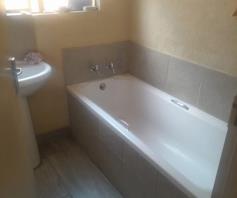A Property24 reader asks:
 A Property24 reader says her deposit is being used to repaint the house and questions whether this is legal.
A Property24 reader says her deposit is being used to repaint the house and questions whether this is legal.I rented a house managed by an agent on behalf of the landlord for 5 years and had paid a deposit. The first inspection was done by the agent and myself two weeks before I left the property, while the final inspection was done by the agent and owner without me. There is no damage to the property, there is only a small amount of dirt on wall paint and carpets (the wall is not damaged and carpets not torn).
Now the owner wants to use my deposit to paint the walls and clean the carpets. Is this the tenant's responsibility to paint the walls after I have been paying rent? It is obvious that the wall will become dirty while the tenant is staying in the place.
Martin Goodman, Director of Rentshield, advises:
The Rental Housing Act (RHA) states in Section 5 that the deposit and interest accrued may be used for reasonable cost of repairing damages to the property. But difference of opinion between a landlord and tenant often occur when it comes to what is reasonable wear and tear. The tenant cannot be liable for fair wear and tear, which is referred to as devaluing something through ordinary and reasonable use.
When it comes to cleaning or painting a property, the Rental Housing Act is specific in that the dwelling needs be in a good state of repair after a tenant has moved out. This means that any mould or dampness will need to be fixed prior to a tenant moving out and if not done, the cost can be deducted from the deposit.
If the property was left in a good state of repair and the walls only need to be repainted and carpets cleaned for a new tenant then the landlord cannot take the cost out of the previous tenant's deposit. The deposit can only be used for damages by the tenant who paid the deposit and cannot be used to neaten up the property for a new tenant.
However, if it stipulates in your lease agreement that you are to paint the walls and clean the carpets before vacating the premises then the tenant is liable to pay for the property to be repainted and for the carpets to be cleaned as the tenant signed the lease agreement.
It all boils down to what is written in your lease and it’s important for a landlord to put down the specifics of painting and cleaning of the property in the lease agreement. If this is not in the lease agreement a landlord cannot hold the previous tenant liable for the costs unless the property has been damaged.
It’s also important to note that if a deposit is used to repair a property, an invoice of the amount due should be sent to the tenant, provided that the tenant is liable for such repairs and damages in terms of the lease - the remaining money, plus interest must be refunded to the tenant by no later than 21 days after expiry of the lease.
Another thing for tenants to take note of is if a landlord does not do an "in and an out" inspection with written or photographic evidence then legally they are not allowed to claim back any damages or repairs from the deposit as there is no proof of damages or what the state of the property looked like before the tenant moved in.
For both the landlord and the tenant, renting can be a stressful process especially in the beginning or towards the end of a lease as disputes around the deposit normally come up at this time. To help alleviate the stress, landlords and tenants can use residential letting tools such as Rentshield, as Rentshield takes the deposit out of renting by offering a zero deposit lease, but if disputes such as damages to the property arise, Rentshield will pay for the damages to the property caused by the tenant of up to one month's rental. We will also manage and cover the cost of property inspections for the landlord with photographic evidence, to ensure consistency.
Readers may submit questions to Property24’s Guest Expert panel and/or comment below. We may not be able to answer all questions received, but all will be considered.








